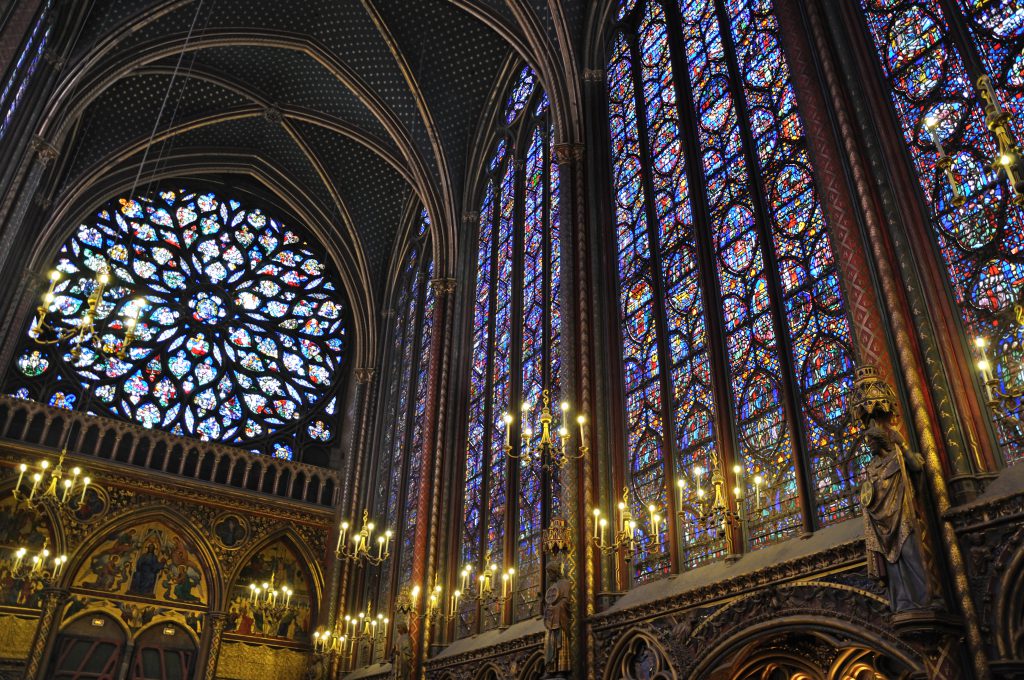
Otto von Simpson, The Gothic Cathedral: Origins of Gothic Architecture and the Medieval Concept of Order, Bollingen Series, Princeton University Press, 1956.
Otto von Simpson was a professor of art history at the Free University in Berlin. In 1956, he published this ground-breaking work. Simpson writes that the “Masters of Chartres, like the Platonists and Pythagoreans of all ages, were obsessed by mathematics; it was considered the link between God and the world, the magical tool that would unlock the secrets of both.” During the 11th and 12th centuries, the School of Chartres was the most famous mathematical school in the West.
St. Augustine believed that immersion within sacred harmonies, based on the underlying structure of the universe, could lead the soul to the experience of God. St. Bernard of Clairvaux maintained that the purpose of religious art and music was to “guide the mind to the experience of ultimate truth.” Gothic cathedrals, Simpson writes, sought to enable those within to grasp the “invisible reality behind the world of visual phenomena.” Abbot Sugar of St. Denis strove to make his abbey an actual “habitation of God through the Holy Spirit.”
Simpson believes the builders of Chartres intended for the cathedral to embody the inner sacred order of the universe. God’s light, the metaphysical link between the divine and physical realms, suffused this shrine and all who entered it. The gothic cathedral, according to Simpson, was a “diaphanous” temple within which the design, sacred music, and radiantly hued light opened up the vibrational heart of the cosmic order, a microcosm of the City of God.